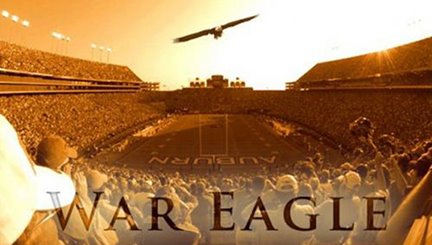One of my columns from the Citizen of East Alabama earlier this year:
All the talk nowadays is about going green. The concern for our environment is growing very rapidly, as it should be. And the concern should not necessarily be for yourself, but rather for your children and grandchildren.
I consider myself to be one of the more “green” people I know of. Now don’t get me wrong, I don’t own a hybrid vehicle and I still take long showers. But there are some little things each and every one of us can do to help out just a little bit. And together, WE can make a difference. The key to it all is this: the way I do it doesn’t really interfere with my everyday life.
It’s really becoming easier and easier to be green, as companies are actually catering to that “lifestyle,” albeit mostly for PR purposes. Clorox has its “Green Works” brand and Arm & Hammer has its “Essentials” brand.
Today, I’m just going to talk about soaps and paper, because I think those are the things you can change that are least disruptive to your life, plus I’m severely limited on space.
The first thing I did when I started to go green is replace my regular soaps with environmentally friendly soaps. That includes dishwashing detergent, laundry detergent and even shampoo. Soap is one of the worst things for the environment that people don’t really know about. The reason is because of the extremely high phosphorus (or phosphates) levels.
It makes sense if you think about it. When you wash your car out in the driveway or yard, what happens to the runoff? If you live anywhere near a water source like a stream or lake, I guarantee that soap will end up there. You might say, ‘but the ground filters it.” Maybe it does at first, but when it rains the phosphates seep farther and farther toward the watershed (or lake, etc.).
The same thing happens on a smaller scale when you’re talking about shampoo, laundry soap, etc. that dumps into the sewer system. It all eventually finds its way to large bodies of water. It’s a fact.
Phosphates stimulate the growth of algae in water, which deplete the oxygen supply in water, which in turn kills plant and fish life. More than half of the phosphorus in this country’s lakes and rivers is estimated to come from detergents and soaps.
I use soaps that are made of natural ingredients and are biodegradable. It should say something on the bottle. The brands I use are Arm & Hammer Essentials laundry detergent (yes, it cleans my clothes very well and it’s cheap), Palmolive dish detergent (it says on the bottle that it’s earth-friendly), Palmolive Pure & Clear dish soap and Suave Naturals shampoo. My hygiene is still top-notch.
Beyond soaps, I recycle everything I can – especially paper. It’s the easiest thing to recycle. And I don’t do it to produce less trash, I do it so that fewer trees will have to be cut down to make more paper. And the biggest culprit? Toilet Paper. Believe it or not, more trees are cut down to make toilet paper than anything else, especially in the United States. Obviously, I can’t recycle my toilet paper, but I can buy partially recycled toilet paper.
I’ve searched far and wide to find a brand that is satisfactory, and I’ll tell you what: not too many of them meet my standards. But I did find one brand that works for me (and my girlfriend, for you ladies). It’s carried at Wal-Mart and it is clearly labeled. I think it’s called White Cloud or something like that. Unlike most other recycled TP, it is soft, absorbent and most importantly, durable.
I truly believe that these minor adjustments in the way I used to do things will make a difference if everybody joins me. Every type of animal is important to our well being as humans, so we must do what we can to help them all survive. And if you don’t think it’s important to help save wildlife… have you ever seen “The Butterfly Effect?” Where do you think that term came from?







